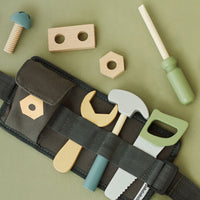How To Start Weaning and Introducing Solids

Following her previous articles on nutrition for pregnancy and the post-natal period, for the final part in the series, nutritional therapist Jodie Abrahams gives 5 tips on introducing solids to your baby.
 Introducing your baby to solid foods is an exciting landmark in their development. The process of starting solids isn't just about your baby learning to eat from a functional point of view though. It's also an opportunity for you to create and encourage a positive relationship with food that will hopefully see your child through to adulthood.
Introducing your baby to solid foods is an exciting landmark in their development. The process of starting solids isn't just about your baby learning to eat from a functional point of view though. It's also an opportunity for you to create and encourage a positive relationship with food that will hopefully see your child through to adulthood.
Watching your baby explore new tastes, textures and smells is a lesson in sensory discovery. It might also be the messiest thing you've ever seen - try to embrace the earfuls of porridge and broccoli-caked eyebrows and always have a camera nearby!
If you've done any research into introducing solids (also referred to as 'weaning' and 'complementary feeding'), you'll know that there are many different schools of thought on the types of foods and ways of introducing them that work best. This article isn't going to prescribe one method over the other - babies are individuals and what works well for one might not for the other. Whether you choose baby led weaning or spoon-feeding purees, these 5 tips will help you make the experience of introducing solids as nutritious, fun and easy as possible.
1) Get the timing right
The NHS recommends introducing solid foods at around 6 months of age alongside breastmilk/formula. Once babies reach this age, key signs that they are ready for their first foods are:
- sitting up unaided
- reaching for food and putting it in their mouths
-
an ability to swallow food.
Before six months, breast milk & formula provide all the nutrition babies need for their rapid growth and development in this early phase of life. Babies may not be able to properly swallow and digest solid foods before this, and introducing foods any earlier may also increase their risk of allergies. By six months, milk alone doesn't meet babies' increased nutritional demands, so solid foods are introduced to complement their milk intake. 2) Stimulate the senses
2) Stimulate the senses
Offering your baby food of different colours, textures and tastes makes eating a genuinely sensory experience and is also a way of providing a range of nutrients.
Once your baby has got to grips with taking their first mouthfuls, whether it's munching on a stick of steamed carrot or slurping on some porridge, you can start to add some variety.
Try to include combinations of foods at each meal to get them used to eating different foods together. For example, some roasted sweet potato, avocado fingers and lentil patties provides variety and a healthy balance of nutrients too.
While you should avoid adding any sugar, salt or honey to your baby's food, don't be afraid to use small quantities of herbs, lemon, garlic, onions and mild spices like cinnamon and turmeric to flavour the food you offer. Remember that if you are breastfeeding, your baby will already be exposed to the flavours of the foods you eat, so don't feel you need to make their food overly plain or bland.
If you're concerned about allergies, you can introduce new foods one by one, 3-5 days apart to monitor if there is a reaction. It's always a good idea to introduce new foods during the day, so if your baby does react it will be more apparent.
3) Make it social
Sit with your child, eat while they eat, smile, talk to them about the food in front of them and model an enjoyment of eating. Eating with your child also helps to establish family mealtimes and shows them that eating can be a social experience.
Bear in mind that babies can be easily distracted by other things going on while they're eating. Resist the urge to wash up or catch up on emails while they're strapped into their highchair. Facing each other at the table while you're both eating can be a new way of interacting with your baby, so take advantage of the opportunity to share the experience with them. 4) Don't take it personally
4) Don't take it personally
While you naturally want your baby to enjoy the food you prepare for them, don't be disheartened if more of your lovingly prepared and presented meals end up on the face or floor than in the mouth. See it as an exploration and learning experience rather than a rejection.
Keeping meals quick and easy to prepare will reduce your disappointment if they don't get the reception you hope for. Batch cooking and freezing individual portions means that you can offer a food again easily if it's been ditched once.
Avoid forcing or pressurising your baby to eat particular foods. If they reject them, calmly offer them again at a different meal. You may need to repeat this several times (it can take 15-20 times for a baby to accept a new food), but it's worth persevering as they're likely to try it again eventually.
5) Experiment and get creative!
Cooking for your baby can make you more creative in the kitchen. For example, experiment with new grains - try buckwheat pancakes, polenta wedges and quinoa patties. You can try different ways of packing vegetables into dishes too as a way of upping their nutritional benefits, like using spinach to make green pancakes and adding beetroot to berry smoothies.
Many families find that cooking with a baby in mind can have health benefits for the whole family. While the baby food industry is huge, there is no substitute for home-cooked food. Cooking from scratch with fresh ingredients will get your baby off to the healthiest start as they move on to solid foods.
To help with weaning your little one, you can follow my recipe to make Green Quinoa Patties!
The tips in this article are generic and do not take into account individual nutritional needs or replace medical advice. For personalised nutrition and lifestyle support, see Jodie's consultation plans at www.jodieabrahams.com. For any health concerns, always consult a medical professional.



 100s of gift ideas
100s of gift ideas












